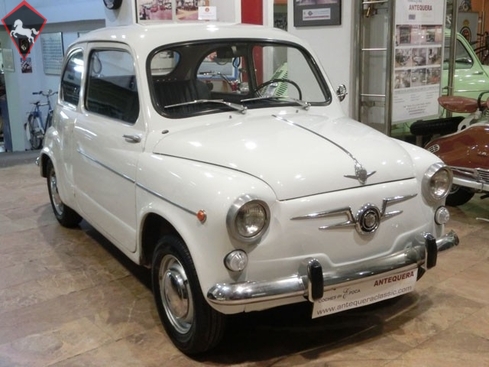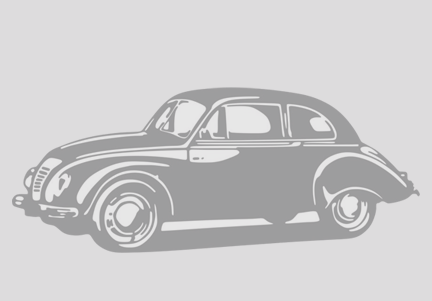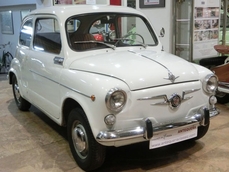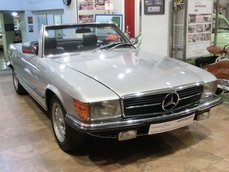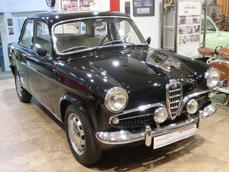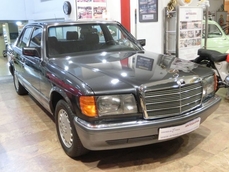Seat 600 1968
General description :
767 CC., 29 CV, 4 CILINDROS, 4 VELOCIDADES, VERSIÓN SEAT SEISCIENTOS D SEGUNDA SERIE, COLOR BLANCO, 4 PLAZAS, RUEDAS NUEVAS, LIBRO DE INSTRUCCIONES ORIGINAL, BUEN MANTENIMIENTO Y CONSERVACIÓN, BUEN ESTADO, CORRECTO FUNCIONAMIENTO, MATRÍCULA ORIGINAL (M), DOCUMENTACIÓN e ITV AL DÍA. MÁS INFORMACIÓN EN: https://antequeraclassic.com/catalogo/seat-600d-1968
1968 Seat 600 is listed for sale on ClassicDigest in VALENCIA by ANTEQUERA CLASSIC for €6000.
Car Facts
Car type : Car Make : Seat Model : 600 Engine size : 0.7 Model Year : 1968 Sub type : Sedan Color : White Color type : Nonmetallic Condition : 1 Location : VALENCIA (SPAIN) Vehicle Registration : Normal
6000 €
Seller Information
ANTEQUERA CLASSIC
ANTEQUERA CLASSIC
Spain
+34 963745397
PASEO PECHINA, 48
PASEO PECHINA, 48 VALENCIA
ANTEQUERA CLASSIC
Spain
+34 963745397
PASEO PECHINA, 48
PASEO PECHINA, 48 VALENCIA

People who viewed this Seat 600 also viewed similar Seat listed at ClassicDigest
Other cars listed for sale by this dealer
About Seat
SEAT, originally an acronym for Sociedad Española de Automóviles de Turismo (Spanish Society of Touring Cars), was established in 1950 as a Spanish automobile manufacturer. Its creation was a result of an agreement between the Spanish government and Fiat to develop a national automotive industry.Here's a narrative of SEAT's journey from being a Spanish subsidiary of Fiat to becoming part of the larger Volkswagen Group (VAG):
Early Years with Fiat (1950s-1960s): SEAT's initial years were marked by a collaboration with Fiat, where the company produced rebadged Fiat models under license. The first SEAT vehicle, the 1400, was introduced in 1953, followed by models like the 600 and 850, which were essentially rebranded Fiats adapted for the Spanish market.
Expansion and Diversification (1970s-1980s): In the 1970s, SEAT expanded its lineup and began producing models developed in-house. The SEAT 124, 127, and 131 were among the successful models that gained popularity not just in Spain but also in other European markets. SEAT also introduced its first sports car, the SEAT 1200 Sport.
Government Ownership and Technological Independence (1980s): As SEAT grew, the Spanish government took complete control of the company, acquiring Fiat's stake in the mid-1980s. This move allowed SEAT to become more independent in terms of technology and design, leading to the development of its own models such as the Ibiza in 1984, a significant milestone for the company.
Volkswagen Acquisition and Integration (1990s-Present): SEAT faced financial challenges in the late 1980s, which led to negotiations with various automakers. Eventually, in 1986, SEAT became a part of the Volkswagen Group (VAG), marking a significant turning point. This integration brought access to VW's technology, platforms, and design expertise.
Milestone Models under VW Group: SEAT continued to produce successful models leveraging VW's resources. The Ibiza became a flagship model for SEAT, followed by other popular vehicles like the Leon, Ateca, and Arona, which catered to various segments including hatchbacks, SUVs, and compact cars.
Technological Advancements: Being part of the VW Group, SEAT incorporated advanced technologies from the parent company, including efficient engines, safety features, and connectivity options, enhancing the appeal of its vehicles.
SEAT, under the VW Group umbrella, continued to expand its market presence, focusing on a blend of stylish design, performance, and technology, aiming to cater to a broader international audience while maintaining its Spanish identity. This journey from being a licensee of Fiat to becoming a part of the VW Group has been pivotal in SEAT's evolution and success in the automotive industry.
